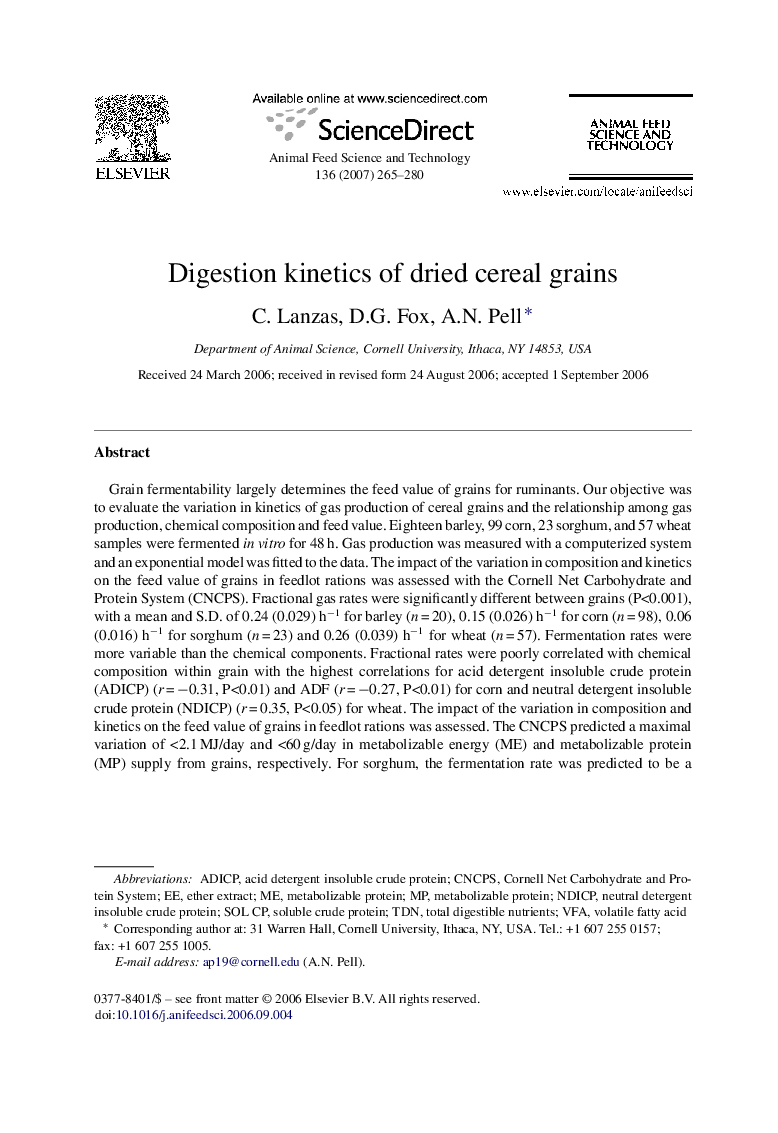| Article ID | Journal | Published Year | Pages | File Type |
|---|---|---|---|---|
| 2421035 | Animal Feed Science and Technology | 2007 | 16 Pages |
Grain fermentability largely determines the feed value of grains for ruminants. Our objective was to evaluate the variation in kinetics of gas production of cereal grains and the relationship among gas production, chemical composition and feed value. Eighteen barley, 99 corn, 23 sorghum, and 57 wheat samples were fermented in vitro for 48 h. Gas production was measured with a computerized system and an exponential model was fitted to the data. The impact of the variation in composition and kinetics on the feed value of grains in feedlot rations was assessed with the Cornell Net Carbohydrate and Protein System (CNCPS). Fractional gas rates were significantly different between grains (P<0.001), with a mean and S.D. of 0.24 (0.029) h−1 for barley (n = 20), 0.15 (0.026) h−1 for corn (n = 98), 0.06 (0.016) h−1 for sorghum (n = 23) and 0.26 (0.039) h−1 for wheat (n = 57). Fermentation rates were more variable than the chemical components. Fractional rates were poorly correlated with chemical composition within grain with the highest correlations for acid detergent insoluble crude protein (ADICP) (r = −0.31, P<0.01) and ADF (r = −0.27, P<0.01) for corn and neutral detergent insoluble crude protein (NDICP) (r = 0.35, P<0.05) for wheat. The impact of the variation in composition and kinetics on the feed value of grains in feedlot rations was assessed. The CNCPS predicted a maximal variation of <2.1 MJ/day and <60 g/day in metabolizable energy (ME) and metabolizable protein (MP) supply from grains, respectively. For sorghum, the fermentation rate was predicted to be a major determinant of the site of starch fermentation. A detailed evaluation of feed values for grains needs to include information on rates of fermentation.
